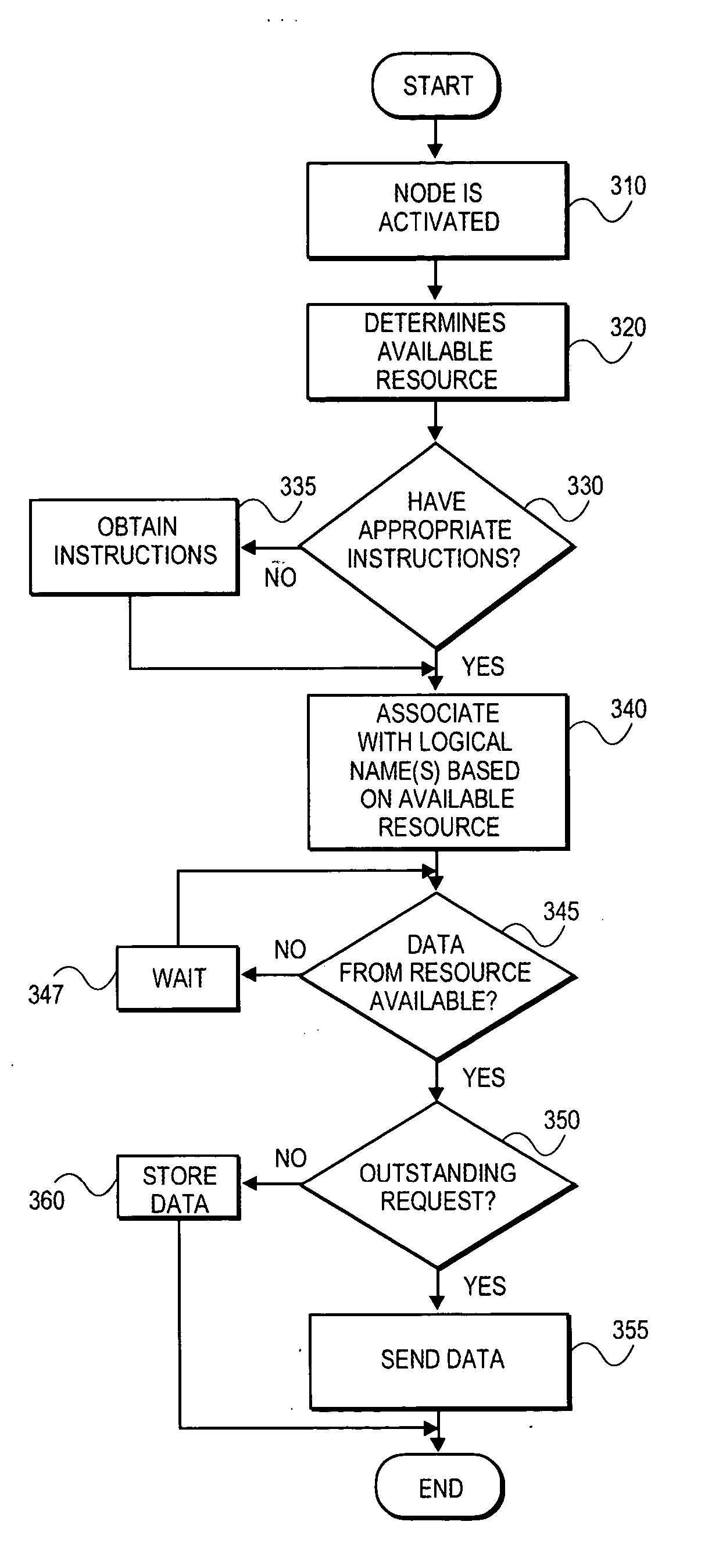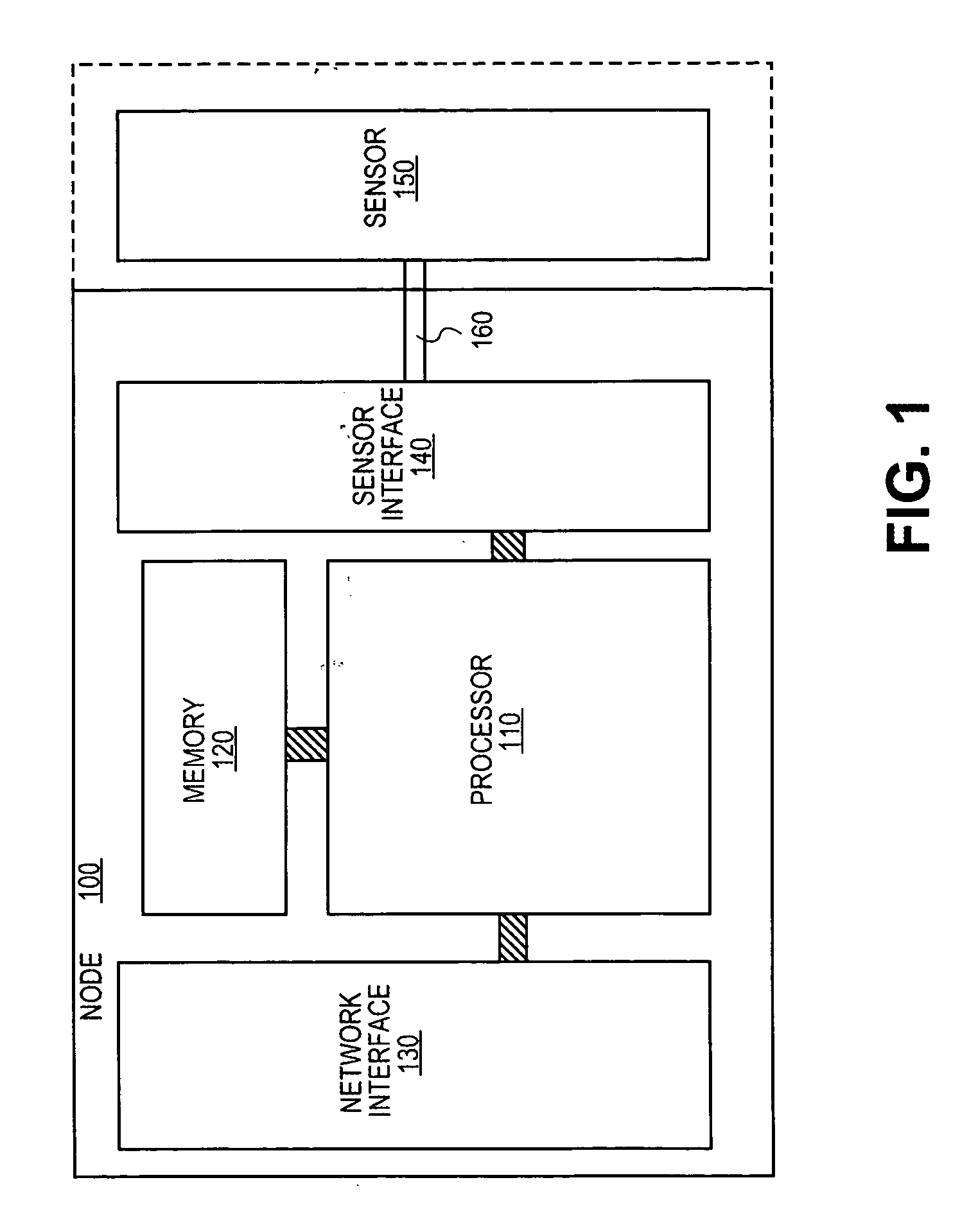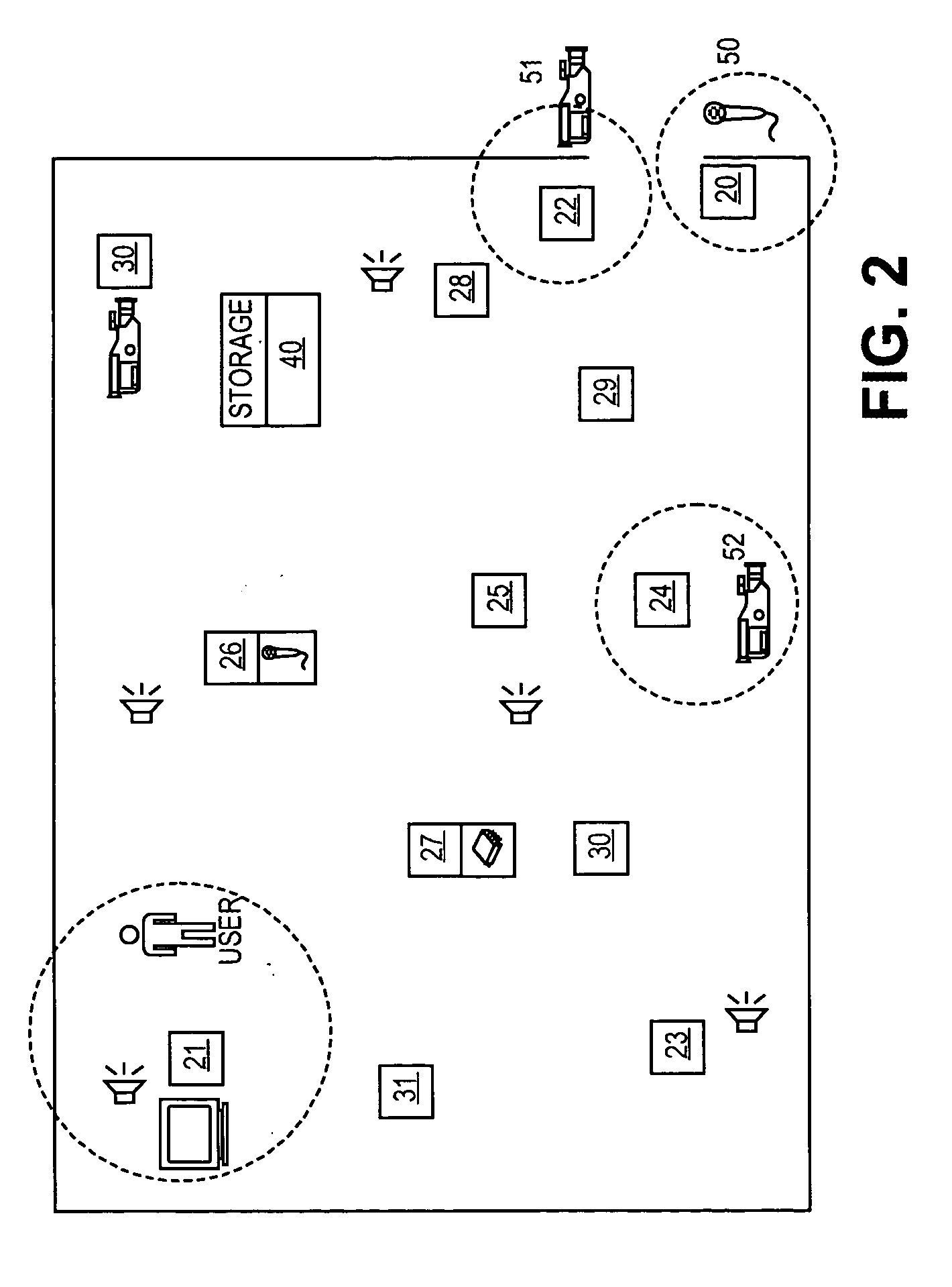Methods and systems for operating a logical sensor network
a sensor network and logical sensor technology, applied in the field of sensor networks, can solve the problems of increasing the cost of deployment or operation, increasing the complexity of the system,
- Summary
- Abstract
- Description
- Claims
- Application Information
AI Technical Summary
Benefits of technology
Problems solved by technology
Method used
Image
Examples
Embodiment Construction
[0002] 1. Field of the Invention
[0003] The present invention generally relates to sensor networks and, more particularly, to automatic programming of a network of devices with sensing, computing, and networking ability.
[0004] 2. Background of the Invention
[0005] The availability of intelligent sensors and micro-sensors has furthered the development of wireless sensor networks. Wireless sensor networks have virtually limitless application particularly in situations where environmental monitoring is likely to provide useful information. Some examples of applications of sensor networks include remote healthcare, farming, environmental compliance, construction, condition-based maintenance, military surveillance, and medical disasters.
[0006] Conventional sensor networks struggle with a variety of issues. To be reliable, conventional sensor networks often must be highly redundant, that is, deploy sensors in large numbers so that if one or more sensors are rendered inoperable, necessar...
PUM
 Login to View More
Login to View More Abstract
Description
Claims
Application Information
 Login to View More
Login to View More - Generate Ideas
- Intellectual Property
- Life Sciences
- Materials
- Tech Scout
- Unparalleled Data Quality
- Higher Quality Content
- 60% Fewer Hallucinations
Browse by: Latest US Patents, China's latest patents, Technical Efficacy Thesaurus, Application Domain, Technology Topic, Popular Technical Reports.
© 2025 PatSnap. All rights reserved.Legal|Privacy policy|Modern Slavery Act Transparency Statement|Sitemap|About US| Contact US: help@patsnap.com



